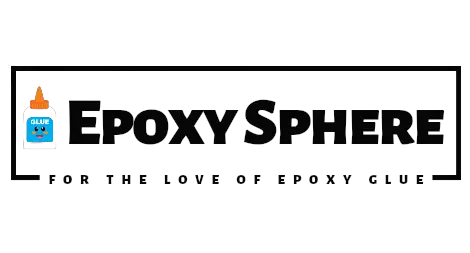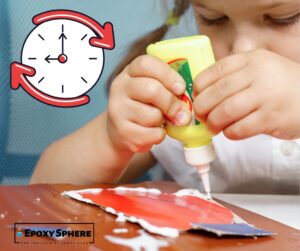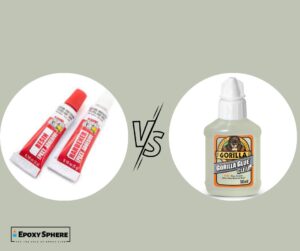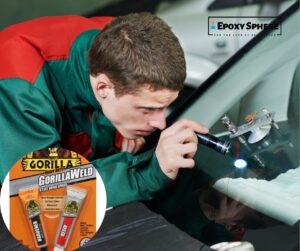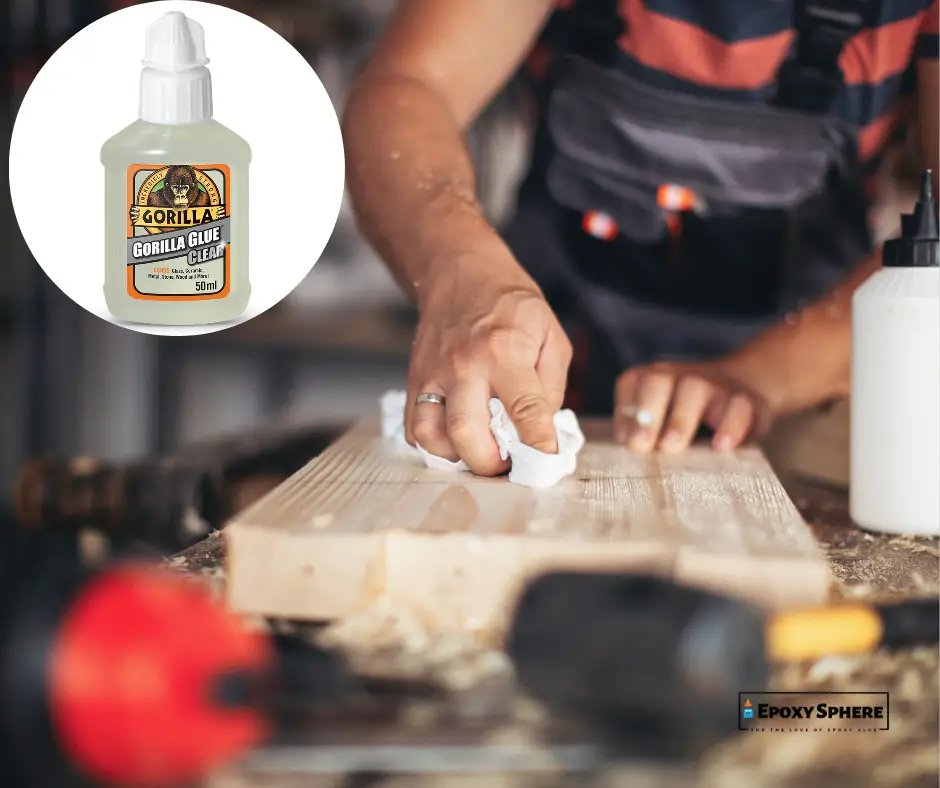
It can get messy sometimes while using gorilla glue on wood. But, How To Remove Excess Gorilla Glue From Wood? If you aren’t a professional woodworker, you can get excess gorilla glue on the wood. In this article, learn tips on how to do this and more.
Gorilla Wood Glue
Gorilla glue is a polyurethane adhesive made in America. They are also the maker of the brand Original Gorilla Glue which first came out in 1994. Gorilla is a glue that can bond just about anything. It is a 100% waterproof glue that doesn’t break down when exposed to the elements.
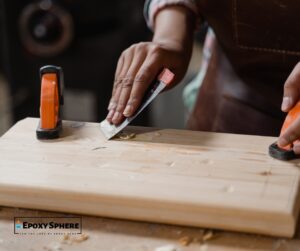
It bonds wood, metal, stone, ceramic, foam, glass, and concrete. Anything. It is said to expand three times its volume and create an extremely strong bond.
How Do You Rid Excess Gorilla Glue From Wood?
From the foregoing, you can see why it is important to know how to get excess gorilla glue out if it’s involved in your woodwork.
Now you are going to apply a lot of caution when removing gorilla glue from wood. For one thing, the wood you’re working on may be a decorative one. If so, you don’t want to cause damage to a beautiful work of art.
Further, if the glue has hardened it doesn’t matter if it’s a work of art. The wood is still going to take some beating. There are two situations where you need to get excess glue off:
When The Glue Is Still Wet
At this time, you can conveniently get excess gorilla glue off the wood. It is even expected that when you’re working on wood with glue, some of it will spill and you would want to get it out.
- You can wipe excess glue off with bare hands, which can be washed off before it gets hard
- You can wipe excess glue off with a dry dishcloth or a towel
- Dampen your dishcloth in acetone and wipe the smear of gorilla glue off
- If you need more force to get it off, then apply it. Especially if the surface of the wood is rough and not so smooth. In this case, you are going to need more force to get the glue out.
- If you run out of acetone, do not hesitate to dab more on the towel or cloth
When The Glue Is Hardened
The situation with dry gorilla glue is different. You are going to apply more tact to protect the wood. Sometimes it may be the floorboards in your home. You don’t want that damaged. To remove dried or hardened gorilla glue from wood, do the following:
Using Sandpaper
You can get off hardened glue with the aid of sandpaper. This is how to do it below:
- If it’s a floorboard, use sandpaper to rub the hardened glue off. Bare floorboards don’t pose many challenges in this regard and sandpaper is a very great tool to remove excess gorilla glue or any type of glue for that matter. Work paper slowly back and forth on the glue, careful not to damage the luster of the surrounding area.
- If the wood is a decorative one or any other wood with a glossy surface, you have to double your caution. Fold the sandpaper so that the surface area it has contact with is reduced, and so that you are able to control how much of the paper touches the wood. Here, you have to work even slower to get the hardened glue out of the wood.
- If it’s a moveable piece of wood, lay it flat on the floor or on a table. Your aim is to not let the piece of wood move around as you work. Then work slowly by moving the sandpaper lightly over the hardened glue until you get it off.
- Brush off the powder or debris of the glue with a soft brush. Or use a dry towel to clean the residue off the wood as you work. Do this cleaning off every few seconds or so.
Using Sharp Objects
Hardened gorilla glue can be sliced off or chipped off the surface of the wood with the use of sharp objects like a razor blade, or a small sharp knife. Your work involved chiseling and slicing off.
You’re chiseling if the excess hardened glue is a glob. This means it has a high relief on the surface of the wood.
Begin slicing down on it slowly with a knife until you have it down to the level of the wood. Switch to a razor blade when the knife is not capable of taking any more off.
Be careful not to damage the surrounding surface of the wood.
Using Paint Thinner
Another option you have is a paint thinner. This is recommended for excess gorilla glue that is flat against the wood, or that seems to have embedded into the fiber of the wood and somehow discolors it. Here is how to do the work:
- Open the windows to allow for good ventilation
- Put on rubber gloves and protective eyewear
- Dab the corner of a towel or dishcloth with some thinner
- Begin to rub on the hardened glue slowly
- Work vigorously if you have to
- Add more dabs of thinner if you also need to
- Avoid burying your head in your work to minimize how much of the residue you inhale
- Wipe away remnants of thinner from the wood with a piece of wet cloth
Using Nitromethane
Nitromethane fights all types of glues, lifting them off easily. You can find it in DIY shops for a few dollars. It works wonders and all you have to do is drop a few of it on the hardened gorilla glue. Give it a few minutes to dissolve, then rub it off with a dry cloth.
Use Nitromethane with caution too. Use protective goggles when applying them to wood. Only repeat the process if absolutely necessary since you also need to protect the wood on which you are working.
Using Mineral Spirit
This is a petroleum product formulated without paint strippers. It is an ideal solvent for removing glues of any kind, including gorilla glue. It is also good for cleaning wood. For this one, you have to go full protection with goggles and gloves.
Take a small cloth and dab the corner of it with some spirit, place that wet spot on the gorilla glue and leave it there for ten minutes. Then wipe or sandpaper the softened excess off the surface of the wood.
Conclusion
Your woodwork or floorboards don’t have to be left looking ugly from glue stains. Any of these suggestions can help you get your wood looking clean and beautiful again.
Make sure you wear protective gear every time you want to use any of the solutions here and do so in a ventilated place. Always keep solutions or solvents out of the reach of children and pets.

Hi, This is John Davis. After years of working in the construction industry, I decided to create a website that would provide people with information about glue and its exceptional uses. I hope You find it useful
